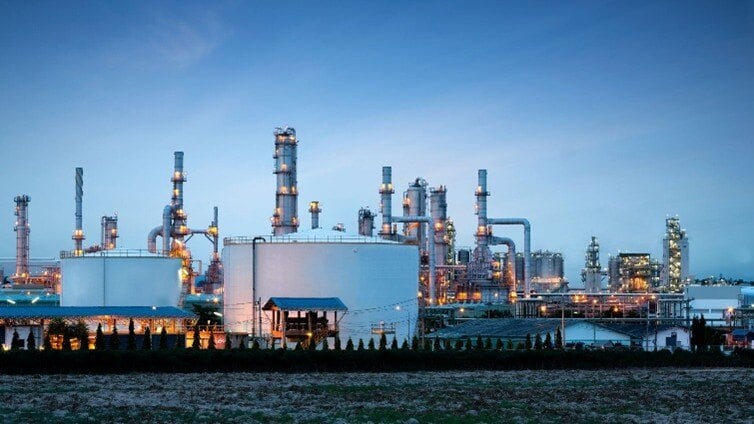Products
Sustainable Aviation Fuel (SAF)
Syzygy Plasmonic's GHG e-Reforming™ technology unlocks low-cost, high-volume SAF production using abundant waste feedstocks such as landfill gas, dairy gas, agricultural waste, and wastewater gas. Our advanced Rigel™ Reactor Cells convert these feedstocks into high-value SAF when paired with Fisher Tropsch units, producing fully compatible with existing jet engines and airport infrastructure. This eliminates the need for costly biogas upgrading and pipeline connections. With SAF mandates driving demand, our technology offers a lucrative opportunity for sustainable aviation, ensuring minimal CAPEX and maximizing resource value.
License Our Technology

Hydrogen
Syzygy Plasmonics' Ammonia e-Cracking technology provides the cleanest, most efficient method for hydrogen production. Utilizing our advanced Rigel™ Reactor Cells, this process achieves exceptional efficiency, converting 5.7 kg of NH3 per kg of hydrogen. Suitable for distributed or large-scale hydrogen import terminals, our modular system reduces emissions, lowers regulatory costs, and enhances profitability. Syzygy's hydrogen solutions offer a versatile and scalable option for various industrial applications, positioning your firm at the forefront of the energy transition.

Methanol
Syzygy Plasmonics offers next-generation methanol production through our proprietary light-driven Rigel™ Reactor Cells. These cells efficiently convert greenhouse gases into valuable methanol, providing a cost-effective and environmentally friendly solution. Suitable for both distributed and large-scale applications, our modular system ensures flexibility and scalability, making it ideal for diverse industrial needs as well as to meet IMO maritime emissions standards. Reduce emissions and enhance profitability with Syzygy's innovative methanol solutions.


Syngas
Syzygy Plasmonics' Rigel™ Reactor Cells are integral to our GHG e-Reforming™ Modular Reactor, producing high-quality syngas from waste feedstocks. Each reactor cell can generate 1300 kg/day of 2:1 syngas, with modular cell stack designs allowing scalable production volumes up to 26 tpd. This technology facilitates industrial-scale deployment with minimal engineering rework, ensuring a compact footprint and ease of maintenance.
Our syngas solutions offer a versatile a nd efficient pathway for sustainable fuel synthesis, empowering your operations with reliable and eco-friendly energy.
Product History
2024
Syzygy and RTI International produce first fuel using Syzygy's GHG e-ReformingTM solution in Raleigh, North Carolina.
Syzygy delivers first industrial-scale Rigel reactor cells to a demonstration site in Ulsan, South Korea.
Syzygy completes on-site demonstration plant upgrade to accommodate testing and optimization of its GHG e-ReformingTM and Steam Methane e-Reforming solutions.
2023
With over 100 employees, Syzygy successfully builds and begins testing a 200 kg/day photoreactor.
Syzygy produces first hydrogen from a Rigel™ reactor cell at its Ammonia e-Cracking demonstration facility in Pearland.
2022
Syzygy enhances reactor design and testing capabilities enabling up to 20 kg / day of hydrogen production.
Syzygy raises $76 Million Series C to accelerate delivery of low-carbon hydrogen technology.
2021
Syzygy designs and tests the first annular photoreactor and raises $23 Million Series B to electrify chemical manufacturing.
2020
Nature publishes Syzygy cofounders’ paper Light-driven methane dry reforming with single atomic site antenna-reactor plasmonic photocatalysts, further illuminating the potential benefits of photocatalysis.
Syzygy completes move into the research and development lab at 9000 Kirby Drive in Houston
Syzygy grows to approx. 30 employees, builds and tests a multicell photoreactor that produces 1 kg/day of hydrogen.
2019
The team grows to 11 employees and successfully tests a 100gH2/day photoreactor.
Syzygy raises $5.8M in Series A funding.
2018
Syzygy cofounders Trevor Best and Suman Khatiwada launch the company, first opening the doors on Feb 5, 2018. The team at Syzygy successfully test and design the first small-scale photoreactor prototype.
2016
The journey to design an efficient plasmonic photocatalyst begins in the Laboratory for Nanophotonics at Rice University, where Syzygy cofounders Professors Naomi Halas and Peter Nordlander discover they can convert traditional catalysts into high-performance photocatalysts that are energized by light instead of heat.
2010-2015
Professors Naomi Halas and Peter Nordlander continue to expand the platform and begin experimenting with using their nanostructure to drive catalysis.
2000s
Professors Naomi Halas and Peter Nordlander establish themselves as world leaders in plasmonics by publishing the concept of the “tunable plasmon.” By altering the size, shape, and composition of plasmonic nanoparticles, they demonstrated that it is possible to change the photon absorbance profile.
1990s
Professors Naomi Halas and Peter Nordlander begin research into plasmonics, a subset of nanophotonics, which studies how the interaction of light and certain metallic elements can elicit the excitement of electrons on their surface (a plasmon).
1980s
Dr. Naomi Halas and Dr. Peter Nordlander begin research into nanophotonics at IBM T.J. Watson Research Center and AT&T Bell Laboratory, eventually becoming professors at Rice University by the end of the decade.
1970s
Initial research started in Japan from Dr. Fujishima and Dr. Honda with photocatalytic water splitting using semi-conductor type photocatalysts based on titanium dioxide (TiO₂).



